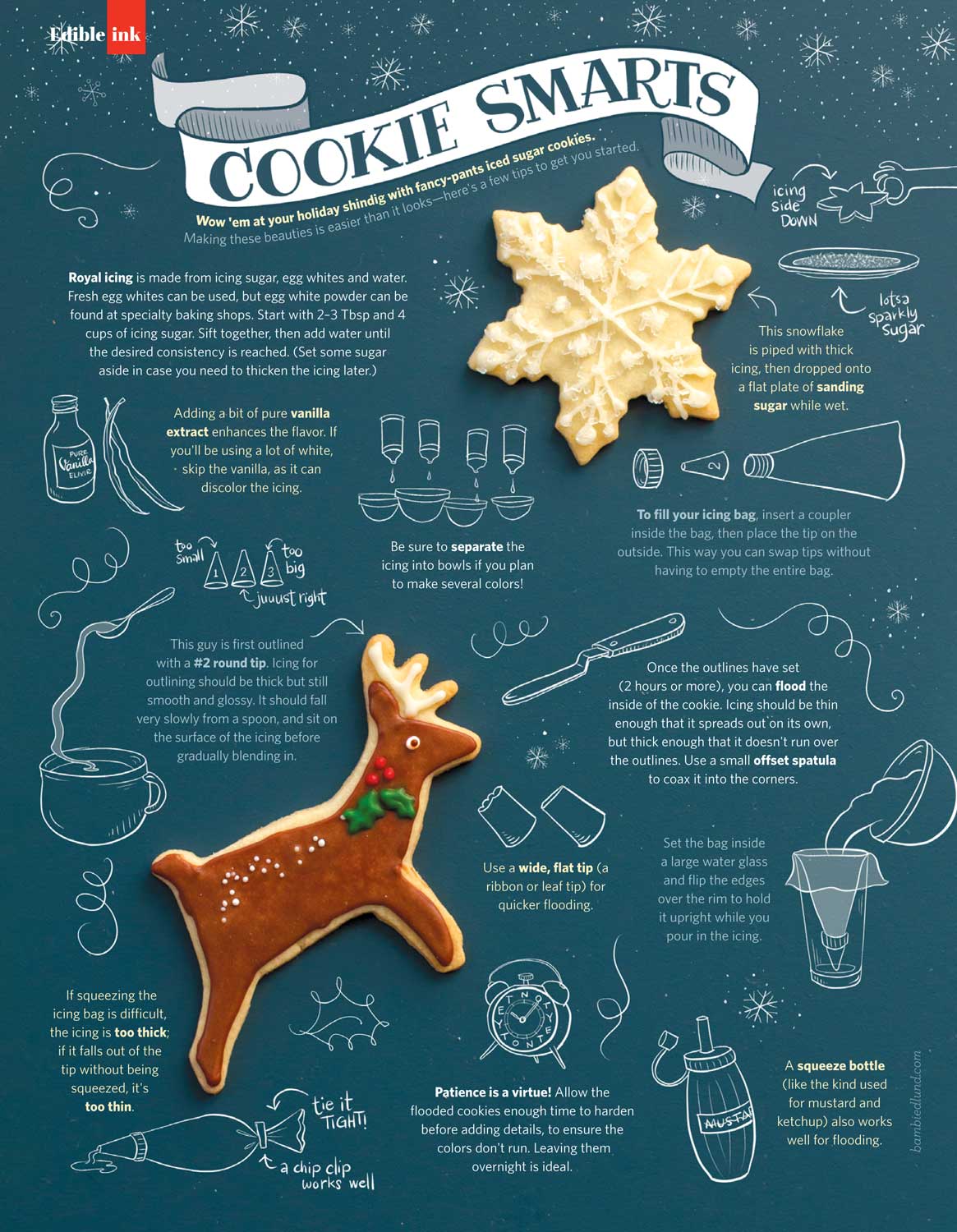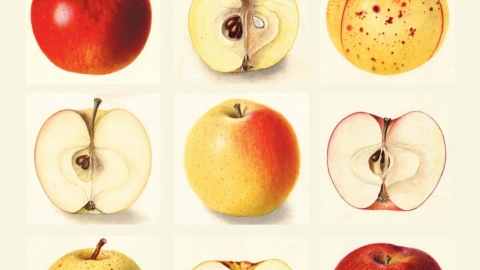Cookie Smarts

Making these beauties is easier than it looks—here's a few tips to get you started.
Royal icing is made from icing sugar, egg whites and water. Fresh egg whites can be used, but egg white powder can be found at specialty baking shops. Start with 2–3 Tbsp and 4 cups of icing sugar. Sift together, then add water until the desired consistency is reached. (Set some sugar aside in case you need to thicken the icing later.)
The snowflake above is piped with thick icing, then dropped onto a flat plate of sanding sugar while wet.
Adding a bit of pure vanilla extract enhances the flavor. If you'll be using a lot of white, skip the vanilla, as it can discolor the icing.
Be sure to separate the icing into bowls if you plan to make several colors!
To fill your icing bag, insert a coupler inside the bag, then place the tip on the outside. This way you can swap tips without having to empty the entire bag.
This guy is first outlined with a #2 round tip. Icing for outlining should be thick but still smooth and glossy. It should fall very slowly from a spoon, and sit on the surface of the icing before gradually blending in.
Once the outlines have set (2 hours or more), you can flood the inside of the cookie. Icing should be thin enough that it spreads out on its own, but thick enough that it doesn't run over the outlines. Use a small offset spatula to coax it into the corners.
Use a wide, flat tip (a ribbon or leaf tip) for quicker flooding.
Set the bag inside a large water glass and flip the edges over the rim to hold it upright while you pour in the icing.
If squeezing the icing bag is difficult, the icing is too thick; if it falls out of the tip without being squeezed, it's too thin.
Patience is a virtue! Allow the flooded cookies enough time to harden before adding details, to ensure the colors don't run. Leaving them overnight is ideal.
A squeeze bottle (like the kind used for mustard and ketchup) also works well for flooding.








